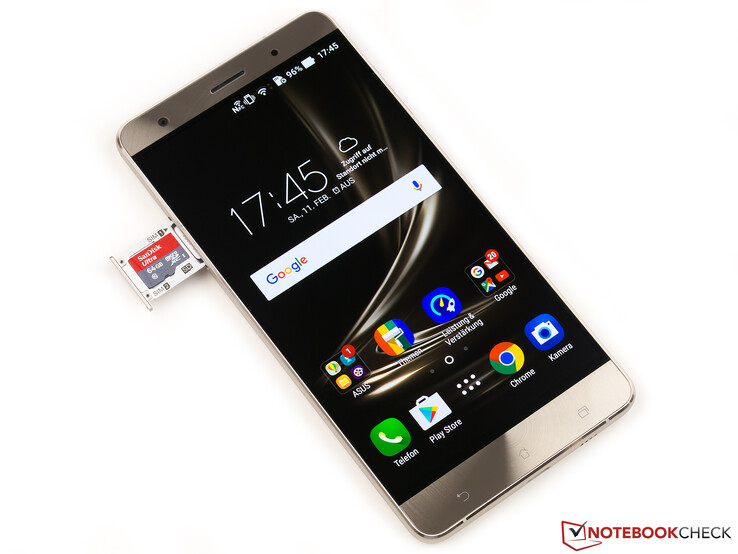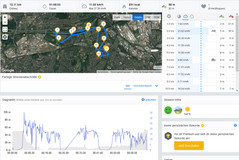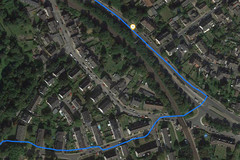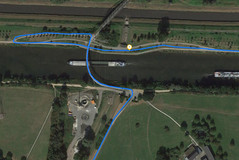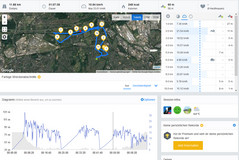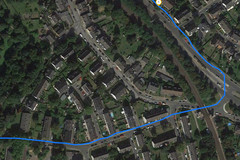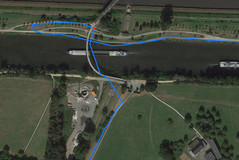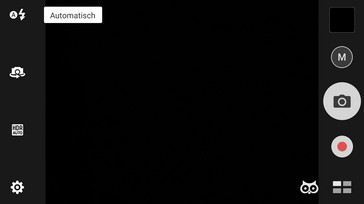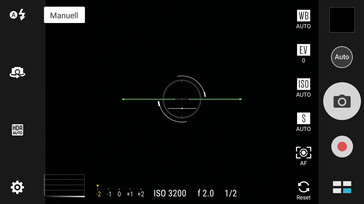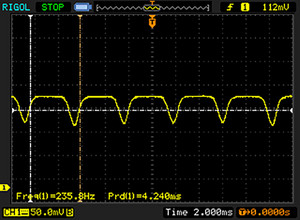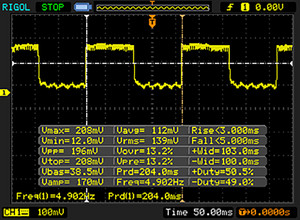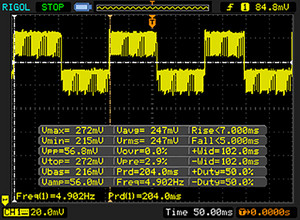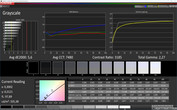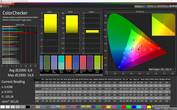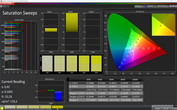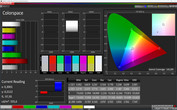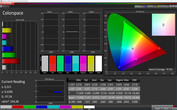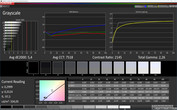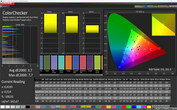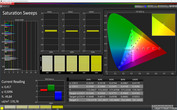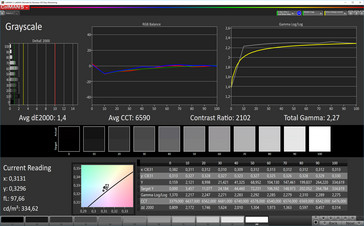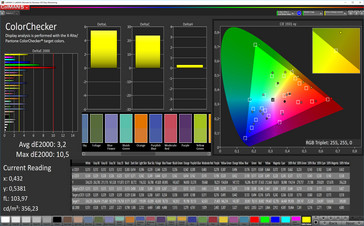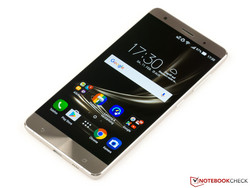Breve Análise do Smartphone Asus ZenFone 3 Deluxe ZS570KL
Os Top 10
» Os Top 10 Portáteis Multimídia
» Os Top 10 Portáteis de Jogos
» Os Top 10 Portáteis Leves para Jogos
» Os Top 10 Portáteis Acessíveis de Escritório/Empresariais
» Os Top 10 Portáteis Premium de Escritório/Empresariais
» Os Top 10 dos Portáteis Workstation
» Os Top 10 Subportáteis
» Os Top 10 Ultrabooks
» Os Top 10 Conversíveis
» Os Top 10 Tablets
» Os Top 10 Smartphones
» A melhores Telas de Portáteis Analisadas Pela Notebookcheck
» Top 10 dos portáteis abaixo dos 500 Euros da Notebookcheck
» Top 10 dos Portáteis abaixo dos 300 Euros
Size Comparison
| Networking | |
| iperf3 transmit AX12 | |
| Apple iPhone 7 (Klaus I211) | |
| Google Pixel XL 2016 | |
| Samsung Galaxy S7 Edge | |
| OnePlus 3T | |
| Huawei Mate 9 | |
| Asus ZenFone 3 Deluxe ZS570KL | |
| iperf3 receive AX12 | |
| Apple iPhone 7 (Klaus I211) | |
| Google Pixel XL 2016 | |
| Samsung Galaxy S7 Edge | |
| Huawei Mate 9 | |
| OnePlus 3T | |
| Asus ZenFone 3 Deluxe ZS570KL | |
| |||||||||||||||||||||||||
iluminação: 85 %
iluminação com acumulador: 619 cd/m²
Contraste: ∞:1 (Preto: 0 cd/m²)
ΔE ColorChecker Calman: 3.2 | ∀{0.5-29.43 Ø4.78}
ΔE Greyscale Calman: 1.4 | ∀{0.09-98 Ø5}
Gamma: 2.27
CCT: 6590 K
| Asus ZenFone 3 Deluxe ZS570KL AMOLED, 1920x1080, 5.7" | Samsung Galaxy S7 Edge Super AMOLED, 2560x1440, 5.5" | Lenovo Moto Z AMOLED, 2560x1440, 5.5" | Huawei Mate 9 IPS, 1920x1080, 5.9" | Google Pixel XL 2016 AMOLED, 2560x1440, 5.5" | Apple iPhone 7 Plus IPS, 1920x1080, 5.5" | Microsoft Lumia 950 XL AMOLED, 2560x1440, 5.7" | |
|---|---|---|---|---|---|---|---|
| Screen | |||||||
| Brightness middle (cd/m²) | 464 | 554 19% | 485 5% | 696 50% | 402 -13% | 557 20% | 297 -36% |
| Brightness (cd/m²) | 468 | 552 18% | 490 5% | 680 45% | 408 -13% | 553 18% | 297 -37% |
| Brightness Distribution (%) | 85 | 96 13% | 92 8% | 93 9% | 85 0% | 97 14% | 93 9% |
| Black Level * (cd/m²) | 0.42 | 0.35 | |||||
| Colorchecker dE 2000 * | 3.2 | 1.59 50% | 2.1 34% | 4.3 -34% | 4 -25% | 1.4 56% | 2.67 17% |
| Colorchecker dE 2000 max. * | 10.5 | 2.56 76% | 5.5 48% | 9.4 10% | 10.1 4% | 3.1 70% | 3.98 62% |
| Greyscale dE 2000 * | 1.4 | 2.01 -44% | 2.6 -86% | 4.8 -243% | 3.2 -129% | 1.3 7% | 2.81 -101% |
| Gamma | 2.27 97% | 2.01 109% | 2.23 99% | 2.33 94% | 2.19 100% | 2.21 100% | 2.08 106% |
| CCT | 6590 99% | 6321 103% | 6843 95% | 7255 90% | 7037 92% | 6667 97% | 6379 102% |
| Color Space (Percent of AdobeRGB 1998) (%) | 82.12 | 88.14 | 63.1 | 66.31 | |||
| Color Space (Percent of sRGB) (%) | 99.98 | 100 | 99.83 | 99.79 | |||
| Contrast (:1) | 1657 | 1591 |
* ... menor é melhor
Cintilação da tela / PWM (modulação por largura de pulso)
| Tela tremeluzindo/PWM detectado | 235.8 Hz | ||
A luz de fundo da tela pisca em 235.8 Hz (pior caso, por exemplo, utilizando PWM) . A frequência de 235.8 Hz é relativamente baixa, portanto, usuários sensíveis provavelmente notarão cintilação e sentirão fadiga ocular na configuração de brilho indicada e abaixo. [pwm_comparison] Em comparação: 53 % de todos os dispositivos testados não usam PWM para escurecer a tela. Se PWM foi detectado, uma média de 8118 (mínimo: 5 - máximo: 343500) Hz foi medida. | |||
Exibir tempos de resposta
| ↔ Tempo de resposta preto para branco | ||
|---|---|---|
| 8 ms ... ascensão ↗ e queda ↘ combinadas | ↗ 3 ms ascensão | |
| ↘ 5 ms queda | ||
| A tela mostra taxas de resposta rápidas em nossos testes e deve ser adequada para jogos. Em comparação, todos os dispositivos testados variam de 0.1 (mínimo) a 240 (máximo) ms. » 21 % de todos os dispositivos são melhores. Isso significa que o tempo de resposta medido é melhor que a média de todos os dispositivos testados (20.2 ms). | ||
| ↔ Tempo de resposta 50% cinza a 80% cinza | ||
| 12 ms ... ascensão ↗ e queda ↘ combinadas | ↗ 7 ms ascensão | |
| ↘ 5 ms queda | ||
| A tela mostra boas taxas de resposta em nossos testes, mas pode ser muito lenta para jogadores competitivos. Em comparação, todos os dispositivos testados variam de 0.165 (mínimo) a 636 (máximo) ms. » 24 % de todos os dispositivos são melhores. Isso significa que o tempo de resposta medido é melhor que a média de todos os dispositivos testados (31.6 ms). | ||
| AnTuTu v6 - Total Score (classificar por valor) | |
| Asus ZenFone 3 Deluxe ZS570KL | |
| Samsung Galaxy S7 Edge | |
| Lenovo Moto Z | |
| Huawei Mate 9 | |
| Google Pixel XL 2016 | |
| Apple iPhone 7 Plus | |
| Microsoft Lumia 950 XL | |
| PCMark for Android - Work performance score (classificar por valor) | |
| Asus ZenFone 3 Deluxe ZS570KL | |
| Samsung Galaxy S7 Edge | |
| Lenovo Moto Z | |
| Huawei Mate 9 | |
| Google Pixel XL 2016 | |
| GFXBench 3.0 | |
| 1920x1080 1080p Manhattan Offscreen (classificar por valor) | |
| Asus ZenFone 3 Deluxe ZS570KL | |
| Samsung Galaxy S7 Edge | |
| Lenovo Moto Z | |
| Huawei Mate 9 | |
| Google Pixel XL 2016 | |
| Apple iPhone 7 Plus | |
| Microsoft Lumia 950 XL | |
| on screen Manhattan Onscreen OGL (classificar por valor) | |
| Asus ZenFone 3 Deluxe ZS570KL | |
| Samsung Galaxy S7 Edge | |
| Lenovo Moto Z | |
| Huawei Mate 9 | |
| Google Pixel XL 2016 | |
| Apple iPhone 7 Plus | |
| Microsoft Lumia 950 XL | |
| GFXBench 3.1 | |
| 1920x1080 Manhattan ES 3.1 Offscreen (classificar por valor) | |
| Asus ZenFone 3 Deluxe ZS570KL | |
| Samsung Galaxy S7 Edge | |
| Lenovo Moto Z | |
| Huawei Mate 9 | |
| Google Pixel XL 2016 | |
| Apple iPhone 7 Plus | |
| on screen Manhattan ES 3.1 Onscreen (classificar por valor) | |
| Asus ZenFone 3 Deluxe ZS570KL | |
| Samsung Galaxy S7 Edge | |
| Lenovo Moto Z | |
| Huawei Mate 9 | |
| Google Pixel XL 2016 | |
| Apple iPhone 7 Plus | |
| Mozilla Kraken 1.1 - Total (classificar por valor) | |
| Asus ZenFone 3 Deluxe ZS570KL | |
| Samsung Galaxy S7 Edge | |
| Lenovo Moto Z | |
| Huawei Mate 9 | |
| Google Pixel XL 2016 | |
| Apple iPhone 7 Plus | |
| Microsoft Lumia 950 XL | |
| Octane V2 - Total Score (classificar por valor) | |
| Asus ZenFone 3 Deluxe ZS570KL | |
| Samsung Galaxy S7 Edge | |
| Lenovo Moto Z | |
| Huawei Mate 9 | |
| Google Pixel XL 2016 | |
| Apple iPhone 7 Plus | |
| Microsoft Lumia 950 XL | |
| WebXPRT 2015 - Overall (classificar por valor) | |
| Asus ZenFone 3 Deluxe ZS570KL | |
| Samsung Galaxy S7 Edge | |
| Lenovo Moto Z | |
| Huawei Mate 9 | |
| Google Pixel XL 2016 | |
| Apple iPhone 7 Plus | |
| Microsoft Lumia 950 XL | |
| JetStream 1.1 - Total Score (classificar por valor) | |
| Asus ZenFone 3 Deluxe ZS570KL | |
| Samsung Galaxy S7 Edge | |
| Lenovo Moto Z | |
| Huawei Mate 9 | |
| Google Pixel XL 2016 | |
| Apple iPhone 7 Plus | |
| Microsoft Lumia 950 XL | |
* ... menor é melhor
| Asus ZenFone 3 Deluxe ZS570KL | Samsung Galaxy S7 Edge | Lenovo Moto Z | Huawei Mate 9 | Google Pixel XL 2016 | Apple iPhone 7 Plus | Microsoft Lumia 950 XL | |
|---|---|---|---|---|---|---|---|
| AndroBench 3-5 | |||||||
| Random Read 4KB (MB/s) | 100.9 | 86.7 -14% | 117.2 16% | 94.7 -6% | 87.7 -13% | ||
| Random Write 4KB (MB/s) | 14.55 | 15.79 9% | 74.9 415% | 8.77 -40% | 14.56 0% | ||
| Sequential Write 256KB (MB/s) | 163.1 | 145.1 -11% | 168.3 3% | 142.9 -12% | 83.4 -49% | ||
| Sequential Read 256KB (MB/s) | 409 | 487.3 19% | 439.7 8% | 594 45% | 258.2 -37% | ||
| Sequential Write 256KB SDCard (MB/s) | 59 | 50.4 -15% | 45.64 -23% | 29.53 -50% | |||
| Sequential Read 256KB SDCard (MB/s) | 77.8 | 76.4 -2% | 78.5 1% | 54 -31% | |||
| BaseMark OS II | |||||||
| Memory (Points) | 2051 | 2072 1% | 2190 7% | 3850 88% | 1677 -18% | 1319 -36% | 1945 -5% |
| Asphalt 8: Airborne | |||
| Configurações | Valor | ||
| high | 30 fps | ||
| very low | 30 fps | ||
| Dead Trigger 2 | |||
| Configurações | Valor | ||
| high | 59 fps | ||
(±) A temperatura máxima no lado superior é 40.9 °C / 106 F, em comparação com a média de 35.2 °C / 95 F , variando de 21.9 a 247 °C para a classe Smartphone.
(+) A parte inferior aquece até um máximo de 39.7 °C / 103 F, em comparação com a média de 34 °C / 93 F
(+) Em uso inativo, a temperatura média para o lado superior é 28 °C / 82 F, em comparação com a média do dispositivo de 32.9 °C / ### class_avg_f### F.
Asus ZenFone 3 Deluxe ZS570KL análise de áudio
(±) | o volume do alto-falante é médio, mas bom (###valor### dB)
Graves 100 - 315Hz
(-) | quase nenhum baixo - em média 19.9% menor que a mediana
(±) | a linearidade dos graves é média (14% delta para a frequência anterior)
Médios 400 - 2.000 Hz
(±) | médios mais altos - em média 8.1% maior que a mediana
(±) | a linearidade dos médios é média (9.7% delta para frequência anterior)
Altos 2 - 16 kHz
(±) | máximos mais altos - em média 5.8% maior que a mediana
(±) | a linearidade dos máximos é média (13.5% delta para frequência anterior)
Geral 100 - 16.000 Hz
(±) | a linearidade do som geral é média (28.9% diferença em relação à mediana)
Comparado com a mesma classe
» 75% de todos os dispositivos testados nesta classe foram melhores, 3% semelhantes, 21% piores
» O melhor teve um delta de 11%, a média foi 35%, o pior foi 134%
Comparado com todos os dispositivos testados
» 86% de todos os dispositivos testados foram melhores, 2% semelhantes, 11% piores
» O melhor teve um delta de 4%, a média foi 24%, o pior foi 134%
Samsung Galaxy S7 Edge análise de áudio
(+) | os alto-falantes podem tocar relativamente alto (###valor### dB)
Graves 100 - 315Hz
(-) | quase nenhum baixo - em média 27.4% menor que a mediana
(±) | a linearidade dos graves é média (8.7% delta para a frequência anterior)
Médios 400 - 2.000 Hz
(+) | médios equilibrados - apenas 4.4% longe da mediana
(+) | médios são lineares (4.7% delta para frequência anterior)
Altos 2 - 16 kHz
(±) | máximos mais altos - em média 5.8% maior que a mediana
(+) | os máximos são lineares (6.2% delta da frequência anterior)
Geral 100 - 16.000 Hz
(±) | a linearidade do som geral é média (20.6% diferença em relação à mediana)
Comparado com a mesma classe
» 35% de todos os dispositivos testados nesta classe foram melhores, 9% semelhantes, 56% piores
» O melhor teve um delta de 11%, a média foi 35%, o pior foi 134%
Comparado com todos os dispositivos testados
» 54% de todos os dispositivos testados foram melhores, 8% semelhantes, 38% piores
» O melhor teve um delta de 4%, a média foi 24%, o pior foi 134%
| desligado | |
| Ocioso | |
| Carga |
|
Key:
min: | |
| Asus ZenFone 3 Deluxe ZS570KL 3000 mAh | Samsung Galaxy S7 Edge 3600 mAh | Lenovo Moto Z 2600 mAh | Huawei Mate 9 4000 mAh | Google Pixel XL 2016 3450 mAh | Apple iPhone 7 Plus 2915 mAh | Microsoft Lumia 950 XL 3340 mAh | |
|---|---|---|---|---|---|---|---|
| Power Consumption | 11% | 22% | -20% | 23% | -19% | -113% | |
| Idle Minimum * (Watt) | 0.85 | 0.63 26% | 0.66 22% | 0.78 8% | 0.53 38% | 0.77 9% | 2.85 -235% |
| Idle Average * (Watt) | 1.2 | 1.1 8% | 1.01 16% | 2.13 -78% | 1.07 11% | 2.04 -70% | 2.95 -146% |
| Idle Maximum * (Watt) | 1.25 | 1.56 -25% | 1.09 13% | 2.17 -74% | 1.12 10% | 2.24 -79% | 3.26 -161% |
| Load Average * (Watt) | 6.97 | 5.95 15% | 3.97 43% | 6.32 9% | 5.53 21% | 4.69 33% | 8.92 -28% |
| Load Maximum * (Watt) | 9.74 | 6.7 31% | 8.34 14% | 6.49 33% | 6.26 36% | 8.66 11% | 9.39 4% |
* ... menor é melhor
| Asus ZenFone 3 Deluxe ZS570KL 3000 mAh | Samsung Galaxy S7 Edge 3600 mAh | Lenovo Moto Z 2600 mAh | Huawei Mate 9 4000 mAh | Google Pixel XL 2016 3450 mAh | Apple iPhone 7 Plus 2915 mAh | Microsoft Lumia 950 XL 3340 mAh | |
|---|---|---|---|---|---|---|---|
| Duração da bateria | 63% | 23% | 35% | 5% | 28% | -11% | |
| Reader / Idle (h) | 23.2 | 27.7 19% | 22.9 -1% | 25.6 10% | 22.2 -4% | 30.6 32% | 18 -22% |
| H.264 (h) | 13.3 | 15.2 14% | 12.1 -9% | 15.8 19% | 8.4 -37% | 13.6 2% | 10.2 -23% |
| WiFi v1.3 (h) | 7.7 | 12.2 58% | 6.8 -12% | 12.6 64% | 8.4 9% | 9.8 27% | 6.2 -19% |
| Load (h) | 2.5 | 6.5 160% | 5.3 112% | 3.7 48% | 3.8 52% | 3.8 52% | 3 20% |
Pro
Contra
A sensação do Asus ZenFone 3 Deluxe é agradável quando é segurado pela primeira vez, graças a sua carcaça de alta qualidade e especialmente ao seu metal sólido. Este esconde um armazenamento de 128 GB UFS 2.0 e exuberantes 6 GB de RAM além do Snapdragon, e assim o smartphone é bastante capaz de competir com outros dispositivos de gama alta de 2016 em termos de desempenho. A conectividade com uma porta USB Type-C, tela Always-On opcional e um slot híbrido dual-SIM/micro-SD, entre outras coisas, também é adequada. Ambas as câmeras de alta resolução conseguem ganhar pontos de bônus. A câmera principal adicionalmente se beneficia de uma sistema autofoco especialmente veloz. No entanto, existe mais espaço para melhorias, particularmente em situações com baixa iluminação e a textura de imagem geralmente granulada. O painel AMOLED de alta-resolução de 5,7 polegadas é grande, mas o aparelho é apenas condicionalmente adequado para aplicativos de RV devido à resolução Full HD. A IU ZenUI 3.0 modificada da Asus oferece diversas funções extra - mas nem todos os usuários gostarão do fato de que 19 GB da generosa capacidade de armazenamento esteja reservada. Além disso, alguns rivais oferecem durações de bateria consideravelmente mais longas.
Os usuários que não precisem das capacidades de realidade virtual e que gostem da interface de usuário extensamente modificada encontrarão um smartphone de alta qualidade de gama premium com apenas algumas desvantagens no Asus ZenFone 3 Deluxe.
No entanto, é questionável se o modelo de teste conta com suficientes destaques para justificar o atual preço inicial de 799 Euros especialmente quando comparado com os rivais com preço bastante reduzido. Ele não consegue servir com uma borda curva como o Samsung Galaxy S7 Edge ou com as extensões modulares do Lenovo Moto Z. Ese não tem o icônico status do Apple iPhone e o seu Android não é atualizado tão rápido quanto o do smartphone Google Pixel XL. E os usuário à procura de uma tela que sej ao maior possível encontrá uma tela maior com quase as mesmas dimensões externas no Huawei Mate 9. Apesar disso, o ZenFone 3 Deluxe é uma alternativa que encontrará amigos na gama premium de smartphones graças à sua sólida tecnologia, funcionalidade dual-SIM e o design bem-sucedido.
Asus ZenFone 3 Deluxe ZS570KL
- 02/16/2017 v6 (old)
Andreas Kilian




